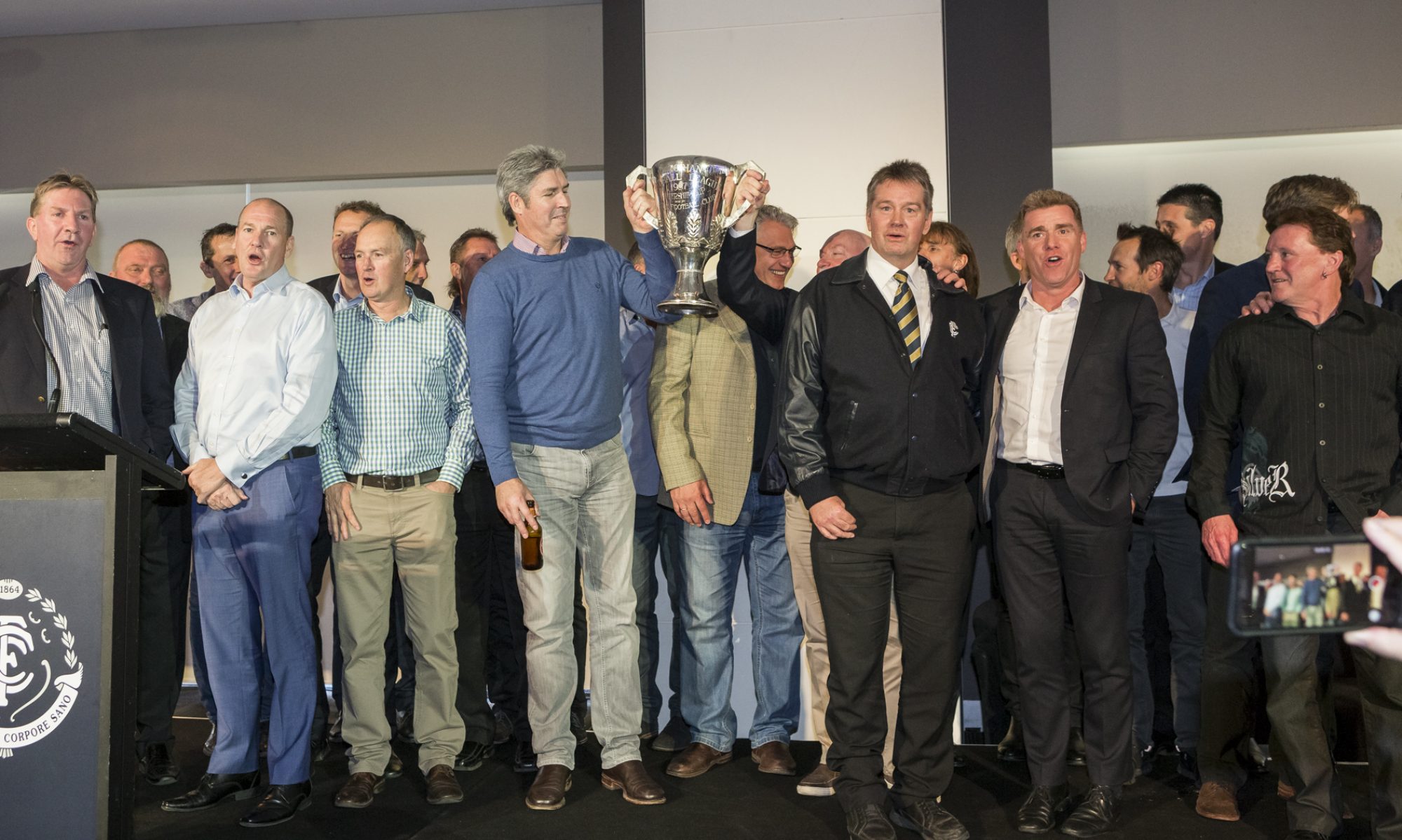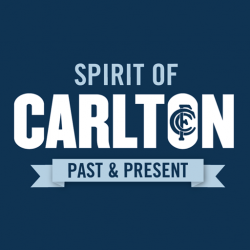A tribute to a Club Legend.
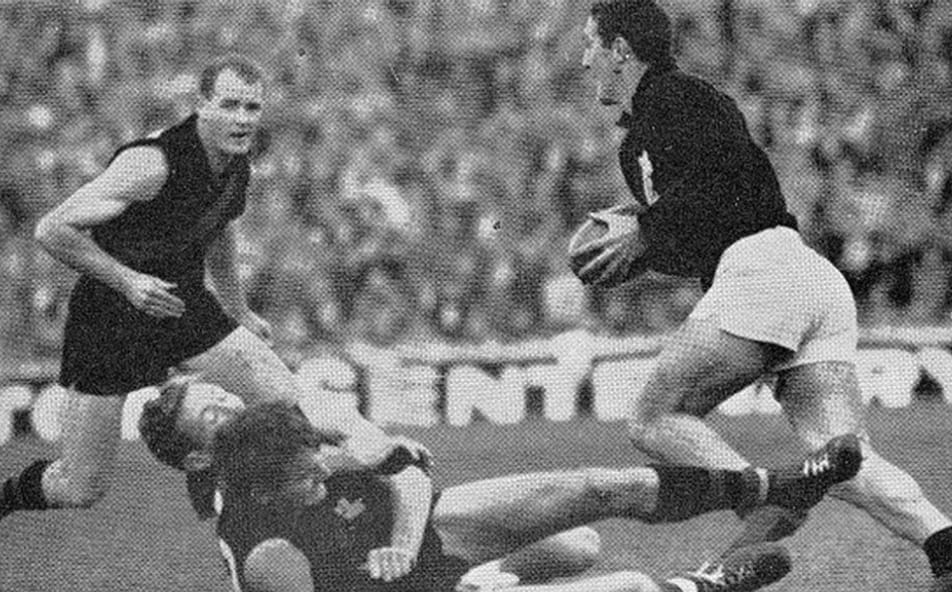
THE CARLTON Football Club – and the Italian quarter of Lygon Street with which his name is inescapably linked – is collectively mourning the passing of Sergio Silvagni, patriarch of one of the great Australian game’s most famous dynasties.
In the exalted company of John Nicholls and Adrian Gallagher, Silvagni, was central to perhaps the greatest following division in football history.
Through him, and through his son Stephen and grandsons Jack and Ben who followed, the Silvagni name is forever part of Australian rules lore.
But it wasn’t always the case, as Serge once revealed.
“I had some friends at Carlton who were playing in the Thirds,” Silvagni said in an interview with this reporter back in 2002, “and on practice match days of a Saturday you’d have the Thirds, Reserves (Seconds) and Seniors – each boasting a squad of fifty players from which to select.
“I was still a schoolboy attending Parade College when I went along to the Carlton ground to try out with my mates. I turned up at half past nine in the morning to get a run with the Thirds, but when the teams were named, they said to me, ‘Son, run the boundary’.
“During the course of the game, a few other leftover players got a run, but at the quarter-time and half-time breaks they told me to keep running the boundary. It wasn’t until the third quarter that they put me on their gun full-forward, but I managed to blitz on this bloke.
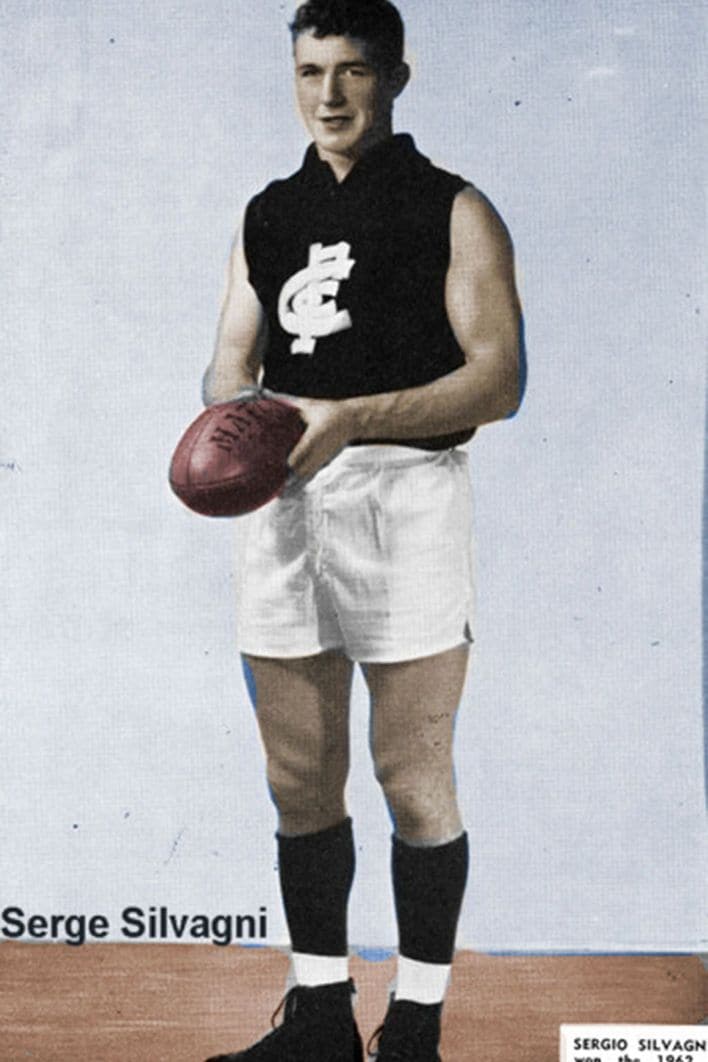
“In the end I discovered how lucky I’d been to even make it onto the ground. The reason I hadn’t got the call-up earlier was because they knew I could play but they didn’t know how to pronounce my name.”
Sergio Silvagni was born in Carlton in 1938, the son of Giacomo and Antonia Silvagni – migrants from Asiago in the Northern Italian province of Vicenza, who set sail for the Great South Land between the wars.
For the first 25 years of his life, until his marriage to his beloved Rita in 1963, Silvagni lived with his sister Milena and their parents in a single fronted dwelling in Canning Street, Carlton – a stone’s throw from Lygon, the epicenter of Melbourne’s Italian community.
A student of St Thomas’s school Clifton Hill and later Parade College East Melbourne, Sergio, as No.1 ruckman, formed part of Parade’s formidable 1st XVIII Premiership team of 1954 – an outfit which included his cousin John, and was captained by Kevin Bergin, the College captain.

The following year, Bergin completed his senior League debut at Carlton . . . and John and Sergio followed suit in 1958.
Silvagni remembered the difficulties of life in Carlton in the immediate post-war years. He recalled that the family home once doubled as a boarding house for newly-arrived Italian men, invariably from his father’s northern Italian town of Asiago, who would board there for a week or two until Dad found them a job, more often than not in concreting.
“Times were tough back then. You thought you were doing well if you got a bottle of lemonade or an ice cream at the weekend,” Silvagni said.
“When the war broke out, a year after I was born, the Italians suddenly became enemies. The Italians who had taken out citizenship here were all right but Dad never bothered, so after a while he was sent away to an alien camp in Broadford, where he lived in a tent and cut timber. I was only about four at the time, but I will always remember him leaving. He was lucky enough to be detained for only a couple of months; some of the Italians served three or four years at internment camps in the country.
“During the war all the Italians kept a low profile. In football, Frank Curcio was the first player of an Italian background to really emerge, and then there was ‘Onga’ [Tony Ongarello] at Fitzroy. I was around during Onga’s time, and if the League’s racial vilification laws had been in place when Carlton and Fitzroy played then half the crowd would have been locked up. Half the crowd would get into me and half would get into Onga.
“Because the Italians were seen as enemies through the war, I had to be a very quiet and low-key kid, almost introverted. I just kept quiet and kept to myself, but playing sport was a way of assimilating. I started playing football at St. Thomas’ in Clifton Hill, I enjoyed it and it just went from there.”
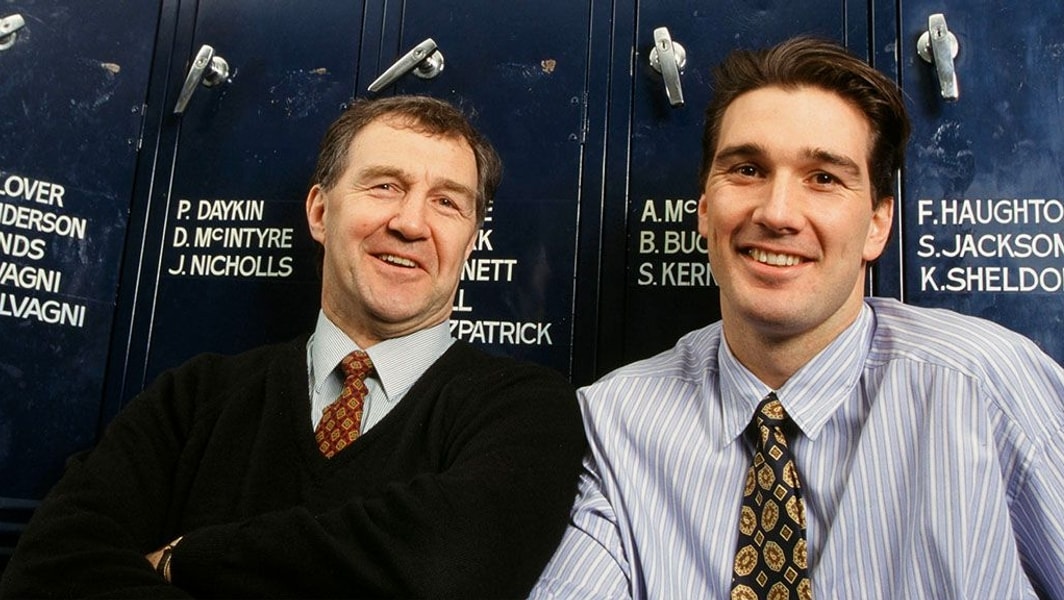
Sergio and son Stephen.
Silvagni was named for his first senior appearance in the 7th Round of 1958, the match with South Melbourne at the Lakeside Oval. In the largely forgotten No.20 guernsey, he followed the hard-edged Carlton captain Bruce Comben and vice-captain Laurie Kerr down the race.
In ’59 he switched to the famous No.1, which would sit comfortably on his back through the great Carlton conquests of which he was part through the Barassi years.
Sergio’s CV at Carlton reads thus; 239 games for 136 goals from 1958-’71; Premiership player 1968 and ’70 (the latter after coming out of retirement); best and fairest 1962 and ’68; leading goalkicker with 40 in 1958; captain in 1964; coach in 1978; Team of the Century ruck-rover; Hall of Fame Legend. At Carlton, the bandy-legged bloke with the downed socks and the brutal physicality truly wrung the cloth dry.
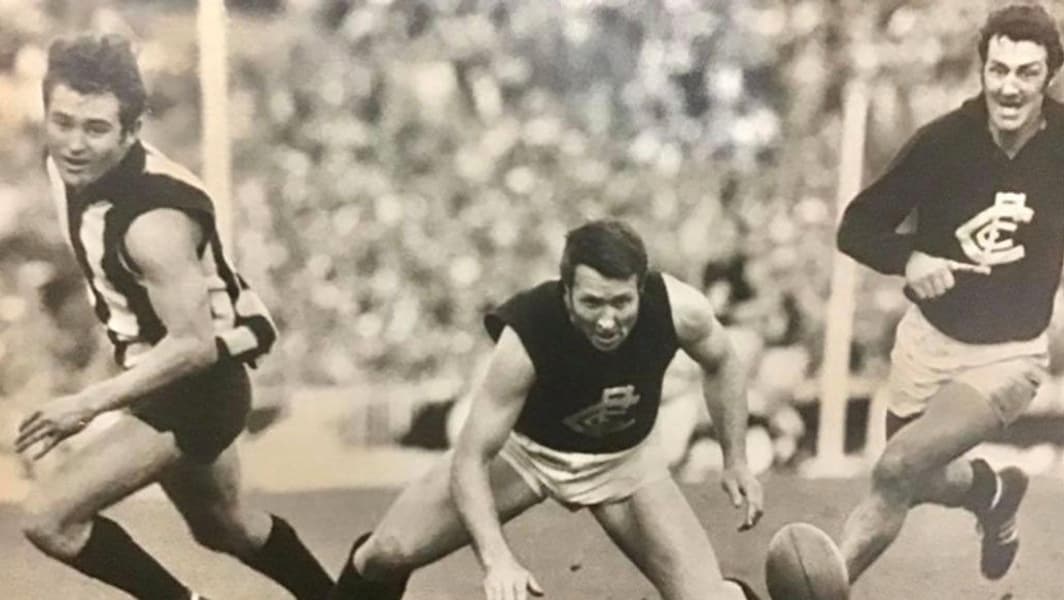
Sergio Silvagni and John Nicholls in pursuit of the football.
The three-time Premiership player and five-time best and fairest John Nicholls, considered Carlton’s greatest footballer of all time, regarded Silvagni – “with Rita a friend for 60 years” – amongst the best of his generation.
“Serge and I had 13 years in the first ruck together, we played together every week and no matter what angle I was coming from he was always there. We didn’t discuss tactics, we just knew eachother,” Nicholls said.
“With the socks down and the bandy legs, Serge was underrated, but he could play anywhere. He was built like Ron Barassi but he could beat ‘Barass’ and he was a good mark. I saw him go to a back pocket to play on blokes like Len Thompson and none of them outmarked him. I also saw him beat (Darrel) Baldock at centre half-back.
“Serge was as strong as a bull, but he was fair. He never did anything wrong. In all the years I never saw him do anything untoward, save for a game against South Melbourne when Eric Sarich played up a bit. Rather than hit Sarich, Serge picked him up by the scruff of the neck and shook him like a rabbit. The problem was that Sarich had an arm free and split Serge’s eye open.”
I put Serge in the top ten players of my era. He was bigger, stronger and better than any of them. He was a Carlton legend.
– John Nicholls
The three-time Premiership player and club Best and Fairest Adrian Gallagher, in paying tribute to his fellow member of Carlton’s famous triumvirate, talked of Silvagni as “a great man”.
“His was a great Italian story and an even greater Australian story,” Gallagher said.
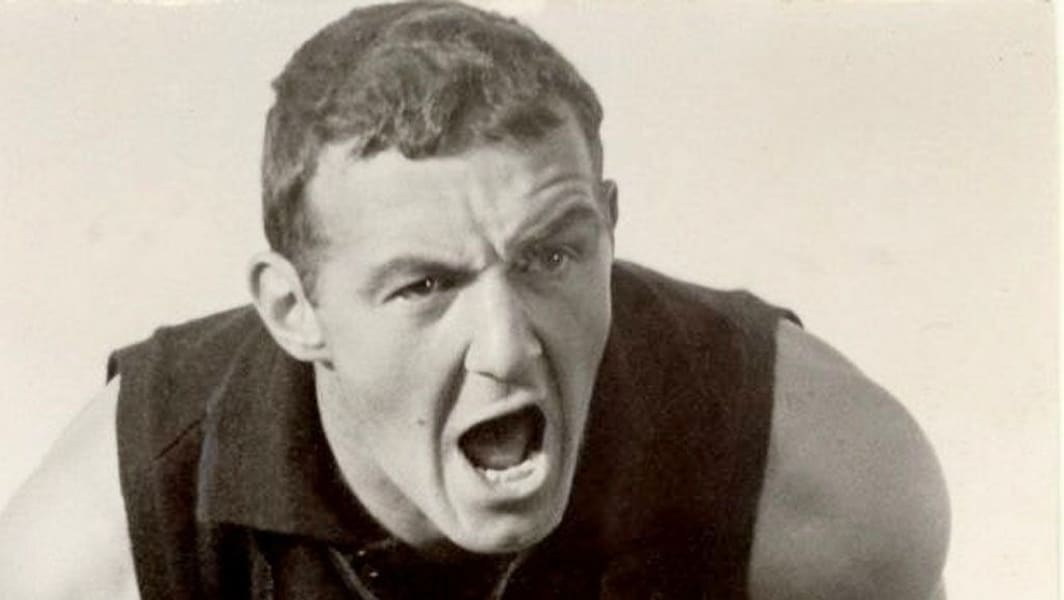
“I saw Serge play in the first Carlton game I saw – a match against Essendon after I came down from the country. My father had found work as an administrator at the nearby Mount Royal Hospital for the Aged and we lived on the premises. Of course you had to barrack for the local team and Princes Park was just up the road.
“It was the opening game of ’59 and the big no.1 was at full-forward. He booted a few goals that day, including the biggest torpedo I’ve ever seen to the scoreboard end at Garton Street. I think I marked him down for five in the Footy Record, I got him to autograph my book which I still have, and he was my favourite Carlton player from that afternoon on.”
In reflecting on his later association with Silvagni and Nicholls as a fellow Carlton player, Gallagher put it simply.
“How fortunate was I to have those two looking after me – one hitting the ball in right direction, the other paving the way. It was like the Red Sea parting in front of me.”
The former Carlton Premiership player, CEO and President Ian Collins, who last paid Silvagni a visit on his 83rd birthday barely a fortnight ago, lamented the loss of his great teammate.
“Serge’s friendship through our wives and families from 1960 onwards was what I appreciated more than anything,” Collins said.
“I played 160 games for Carlton and there was only a couple I didn’t play with Serge. We finished on the same day in 1971, in the final home and away round of the season against Collingwood at Princes Park. He retired that day and I crossed to Port Melbourne to coach. That was the same day Ron Barassi coached his last game for Carlton that day and Billy Barrot stormed off.
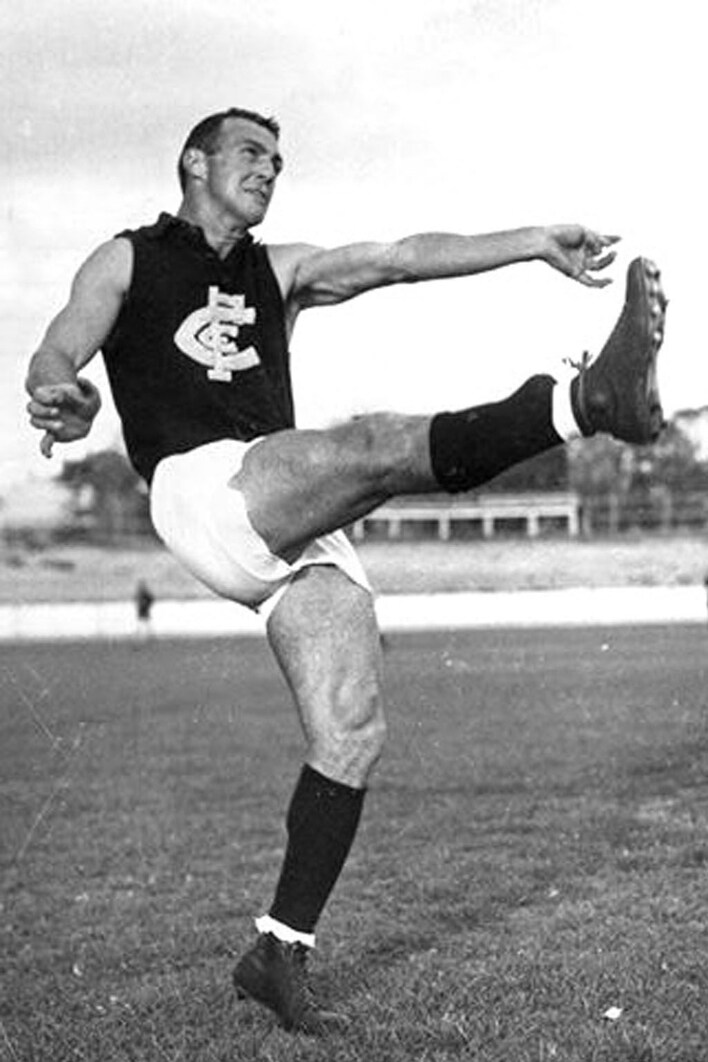
“That last game against Collingwood in ’71 was a virtual carbon copy of the last time we played them in 1970 – the ’70 Grand Final. We were 44 points down at half-time in ’70 and 42 down at half-time in ’71, and we got up both times. By then most of the Collingwood blokes slept with the lights on, and fancy Carlton playing Collingwood this week.”
Collins recalled Silvagni turning in a string of commendable performances as a forward for the Carlton thirds, “and I reckon he bypassed the seconds to play seniors”.
“Serge was so strong it wasn’t funny. When he finished up at school he followed his father into the concreting profession and he didn’t do weights because he didn’t need to.
“He was a great back-up to ‘Big Nick’ in the ruck, in the days when the ruck-rover could also fly from the back at the throw-ins. He was an inside player and there was no flashiness, but he could take a good mark for his size. He never got pushed off the ball and he was fair, but the tougher it got the better he played.
“Even when he retired he kept his connection with the club. He contributed greatly on match committee, he coached for a brief time and all he ever wanted to do was help. Serge was born in Australia, grew up in Carlton, lived in Carlton and played for Carlton. He couldn’t have given Carlton more.”
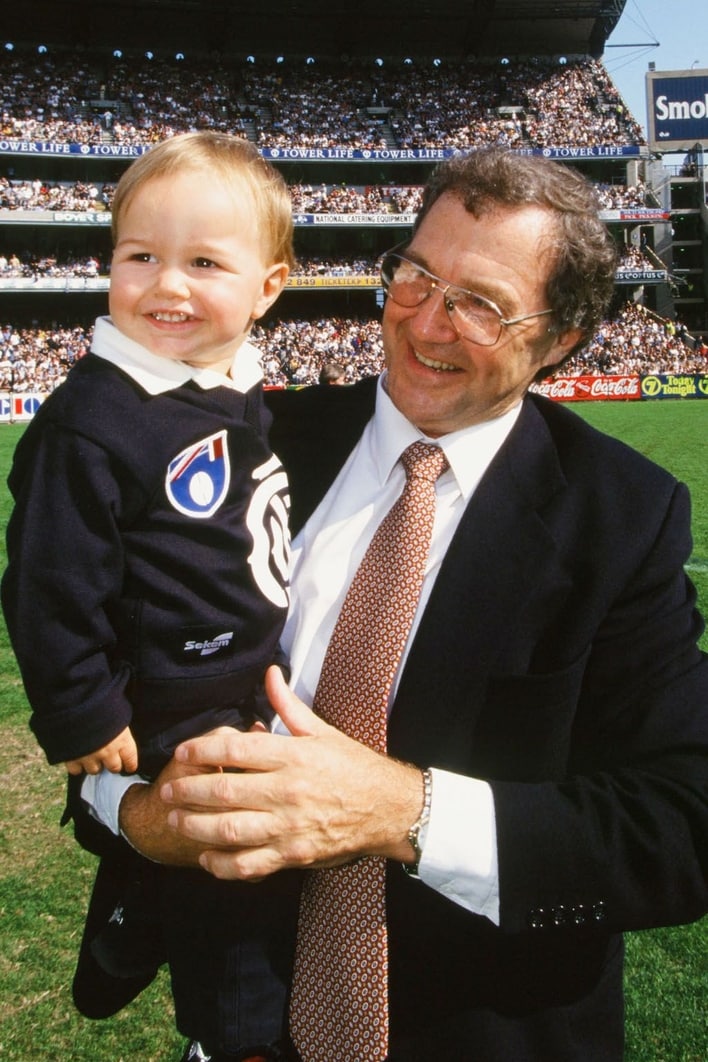
Sergio and grandson Jack.
The record books are littered with the names of League footballers of Italian origin who made an impact between the wars – men of stature like Len Incigneri at Richmond, Frank Curcio at Fitzroy and Albert Boromeo at Carlton.
Yet it were those of Silvagni’s ilk – the first generation Australian footballers of Italian origin in the immediate post-World War Two years? like Peter Pianto at Geelong and Albert Mantello at North Melbourne – who caused the greatest stir.
The late Lygon street hairdresser Ernesto (Ernie) Angerame, for a time the Carlton Football Club’s official barber – put it best when he reflected on the Silvagni influence in a previous interview.
“I knew the parents of both Sergio Silvagni and John Benetti, and they all lived in the Carlton area, like so many of the Italians,” Angerame said.
“When their boys broke through at Carlton we all followed them because we knew their names and it was wonderful to hear those names on radio. When Australia opened up to the migrants in the early to mid-1950s, the majority of Italians continued to come to Carlton. By then the people of my generation were already settled, so we began to take the new migrants to the football at the Carlton ground to see Silvagni and Benetti play.”
